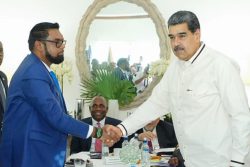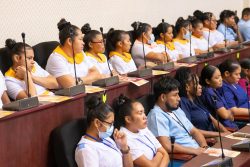Last Friday, as the World Health Organisation (WHO) celebrated its 75th anniversary highlighting the contributions it has made over the years and the progress in global public health, World Health Day was observed under the theme ‘Health for All’. Citing increases in life expectancy over the last seven decades, the development of vaccines, antibiotics and other medicines that cure and treat diseases, equipment to improve diagnoses and its championing of research, the WHO gave itself a well-deserved pat on the back.
However, it noted that many challenges still existed, including “complex climate, demographic, economic and political crises” that were placing it under “unprecedented pressure”. Indeed, some have questioned the usefulness of the WHO, particularly since the onset of the COVID-19 pandemic, which continues to linger three years later.
Perhaps the most virulent of the WHO’s critics during that period was former US president Donald Trump, who had begun moving in July 2020 to withdraw America from the UN agency. Among the claims made by Mr Trump were that the WHO failed to obtain and share information on COVID-19 in a timely manner, that it had said in January 2020 that there was no human-to-human transmission of the virus, that it was “too close to China” relationship-wise and that it had opposed global travel restrictions. Those claims were fact-checked and like most of Mr Trump’s pronouncements, found to have very little basis in fact. Nevertheless, coming from a world leader, they were damaging to the organisation. History has already proven that it was Mr Trump’s intransigence on the science from his country’s health experts which resulted in the US’s devastating losses to the virus, rather than anything the WHO did or did not do.
That being said, there is no disproving the fact that the year’s theme, ‘Health for All’ is a misnomer and can best be described as a wish that might come true in the very distant future. Healthcare is quite possibly the least equitable global necessity. Indeed, in spite of all of the advancements attained since the WHO was founded in 1948, quality healthcare remains mostly unattainable to those who really need it. In many countries, including ours, the poor, whose diets, living conditions and lack of access to clean water puts them at greater risk for contracting diseases, can ill afford the expensive treatments they require. In contrast, the rich and privileged can access the best diagnostics, treatment and care. Unfortunately, staying healthy or recovering from an illness is usually very much related to one’s social status.
What is available at public health facilities in too many places in the world, often in rural areas, is less than basic. In Guyana, for example, despite close to $1 billion being spent on the health sector last year, according to Minister of Health Frank Anthony, rural and hinterland clinics are still unable to deal with run-of-the-mill illnesses. Not that this is entirely the Health Ministry’s fault, the lack of infrastructure in general means these centres are unable to operate certain equipment or store medication that require particular conditions to not only retain their optimal potency, but to be safely used.
Well-meaning practitioners here and in other countries where these conditions persist are stymied; there is only so much they can do in the face of the lack of equipment, supplies and medicines. Patients who are unable to travel to larger clinics and hospitals in cities and towns suffer. Every now and then, they might benefit from outreach activities carried out by benevolent charities, or even teams sent in by their governments. Unfor-tunately, illness does not operate on any schedule. It is no longer shocking to find rural folk with common ailments waiting months or even years for diagnosis and treatment. Indeed, more than half of the world’s population has no access to, nor recognise the value of routine dental checks, eye exams, and screening for cancers among other touted health musts.
To be fair, a lot of this has little to do with the WHO as it is the remit of governments to ensure the good health of their citizens. However, as the global overarching health body with 194 member countries, and a mandate to ensure that “everyone has the right to the highest attainable standard of health, regardless of their race, religion, political belief, or economic or social condition”, the WHO certainly has its work cut out. Seventy-five years have gone by since this objective was first articulated with no definitive timeline. Of course, the WHO is aligned with the UN’s third Sustainable Development Goal, ‘Good Health and Well-being’ by 2030. Regrettably, at this point, all signs indicate that like ‘Health for All’, this is a target well ahead of its time.








